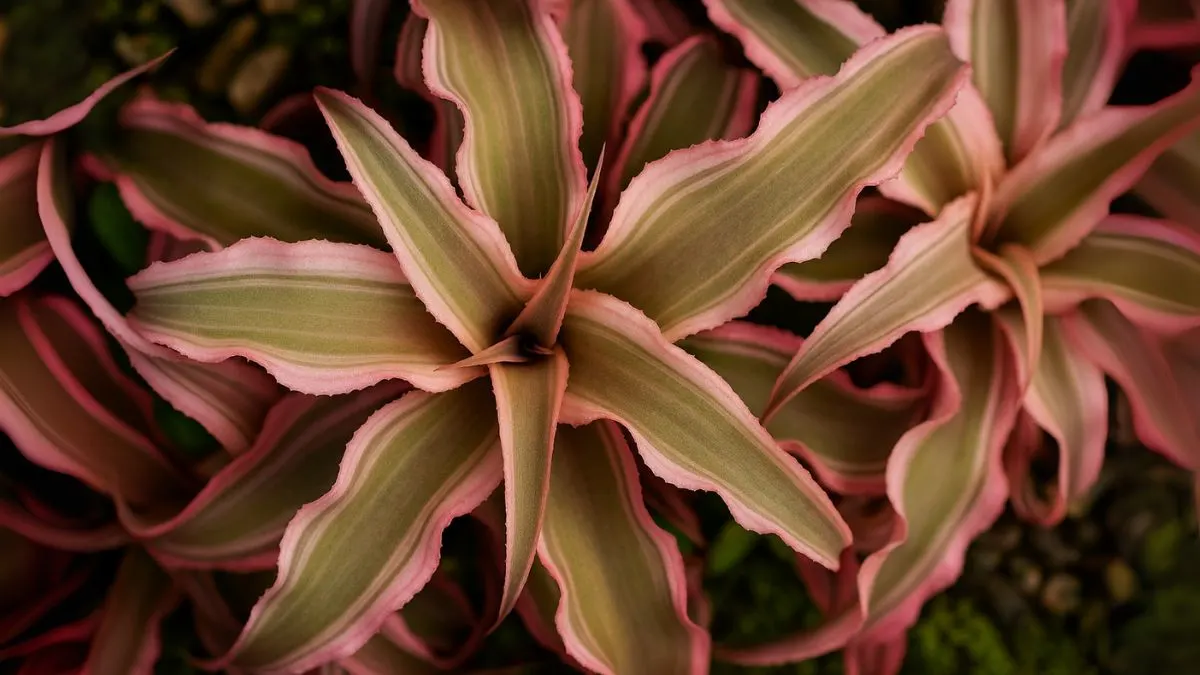Looking for a houseplant that makes a bold statement without being overly demanding? Meet the Earth Stars, scientifically known as Cryptanthus. With their star-shaped foliage and dazzling stripes of pink, green, bronze, or red, these bromeliads are among the most striking indoor plants you can own.
But their beauty comes with specific care needs. In this guide, we’ll cover everything from light and water requirements to propagation, so you can keep your Earth Stars thriving whether you’re in Canada, the USA, or anywhere else in the world.
Light Requirements

- Bright, Indirect Light Works Best
One of the biggest factors in keeping these plants vibrant is light. They thrive in bright, indirect light, which enhances their striking leaf colors. Place them near a sunny window but avoid harsh, midday sun that could scorch their leaves.
- Direct Light vs. Indirect Light
While some varieties of Earth Stars requires abundant, bright and direct light, most will grow happily under filtered sunlight. If you’re unsure, test by placing your plant where you’d keep an orchid—it’s about the same requirement.
👉 Personal tip: When I moved mine closer to an east-facing window, the colors became more vivid within weeks.
Watering Earth Stars
- Consistent Moisture Is Key
When it comes to watering, the rule is simple: Water your Cryptanthus plants regularly during the growing season. They are humidity lovers and don’t like drying out completely.
- Moist But Not Waterlogged
Remember, watering: keep the soil consistently moist but not waterlogged. Overwatering leads to root rot, while underwatering can cause crispy leaves.
👉 Best practice: Water with filtered water or rainwater to avoid salt build-up in the soil.
Also Read: How to Care for Philodendrons Birkin (and Keep It Thriving)
Ideal Climate and Humidity
Earth Stars grow best in a moist and humid climate. In their native Brazilian environment, they thrive in warm, humid air. Indoors, you can replicate this by placing them in bathrooms, kitchens, or near a humidifier.
👉 Quick hack: Pebble trays with water placed under the pot can also raise humidity naturally.
Soil and Potting Needs
- The Right Mix
For best results, use a sterile potting medium and press offshoots into the soil when propagating. A well-draining bromeliad or orchid mix combined with peat and perlite works wonders.
- Drainage Matters
These plants dislike soggy soil. Always choose pots with drainage holes to ensure extra water escapes.
- Propagation Tips
Earth Stars are generous when it comes to producing pups (small offshoots). Once the mother plant starts to fade after flowering, remove the pups and press offshoots into the soil. They’ll root easily if the potting medium is airy and sterile.
Propagation not only keeps your collection growing but also ensures you’ll always have backups if one plant declines.
Troubleshooting Common Issues
Problem |
Likely Cause |
Solution |
Faded leaf color |
Too little light |
Move to brighter, indirect light |
Brown, crispy edges |
Low humidity or underwatering |
Mist regularly or increase humidity |
Yellowing leaves |
Overwatering / poor drainage |
Improve soil mix and watering schedule |
Stunted growth |
Lack of nutrients |
Feed with diluted liquid fertilizer monthly |
Personal Experience with Earth Stars
The first time I brought an Earth Stars plant home, I underestimated its love for humidity. The leaves started curling within days. Once I shifted it to a bathroom shelf—where the air was naturally moist—it perked up instantly. Now, with the right care, my plant has produced several pups, and I’ve even shared them with friends.
It’s not just a plant—it’s a conversation starter. Guests always ask if it’s real because the foliage looks so striking.
Also Read: How to Grow and Care for the Syngonium Pink Plant at Home
Quick Care Checklist
- Light: They like bright, natural indirect light; avoid harsh direct sun unless specified for your variety.
- Watering: Water your Cryptanthus plants regularly during the growing season; keep the soil moist but not soggy.
- Soil: Use a sterile potting medium and press offshoots into the soil for healthy growth.
- Climate: Grow best in a moist and humid climate; use misting or a humidifier indoors.
- Propagation: Separate and root offshoots to expand your collection.
Earth Stars may look exotic, but with the right care, they’re surprisingly manageable. Whether you’re a beginner or a seasoned plant enthusiast, these bromeliads can brighten up any living space with their star-shaped beauty.
So, if you want a plant that’s both striking and rewarding, give Earth Stars a try. With just a little attention, they’ll reward you with vibrant colors and lush growth for years to come.






